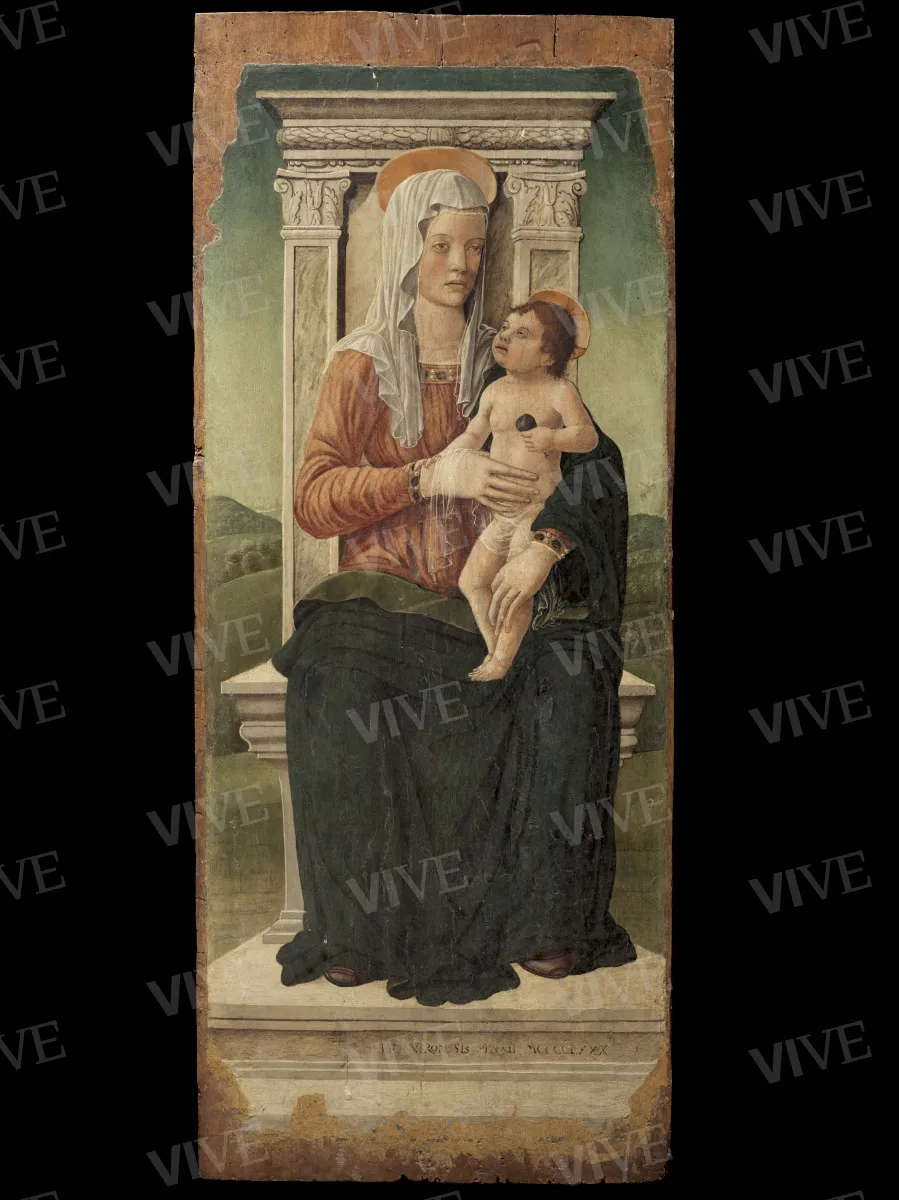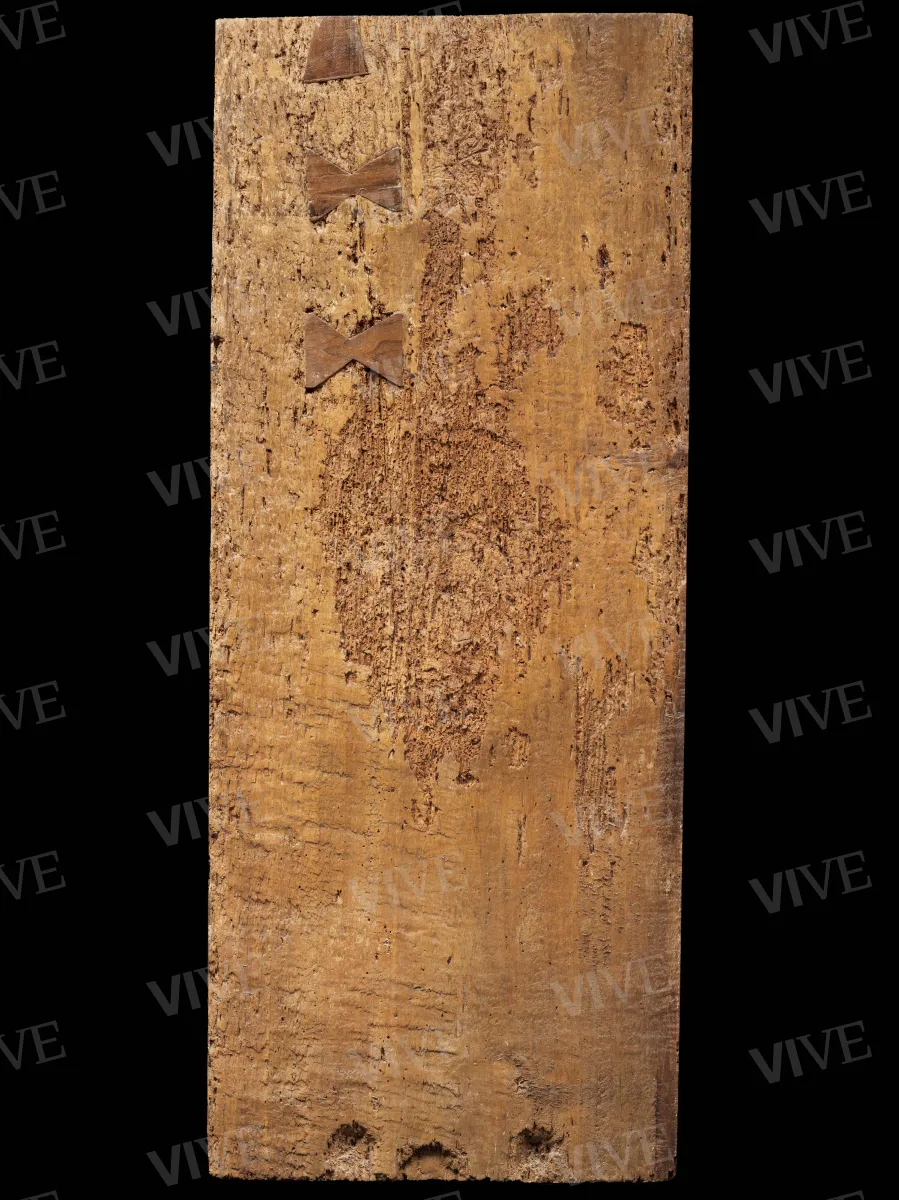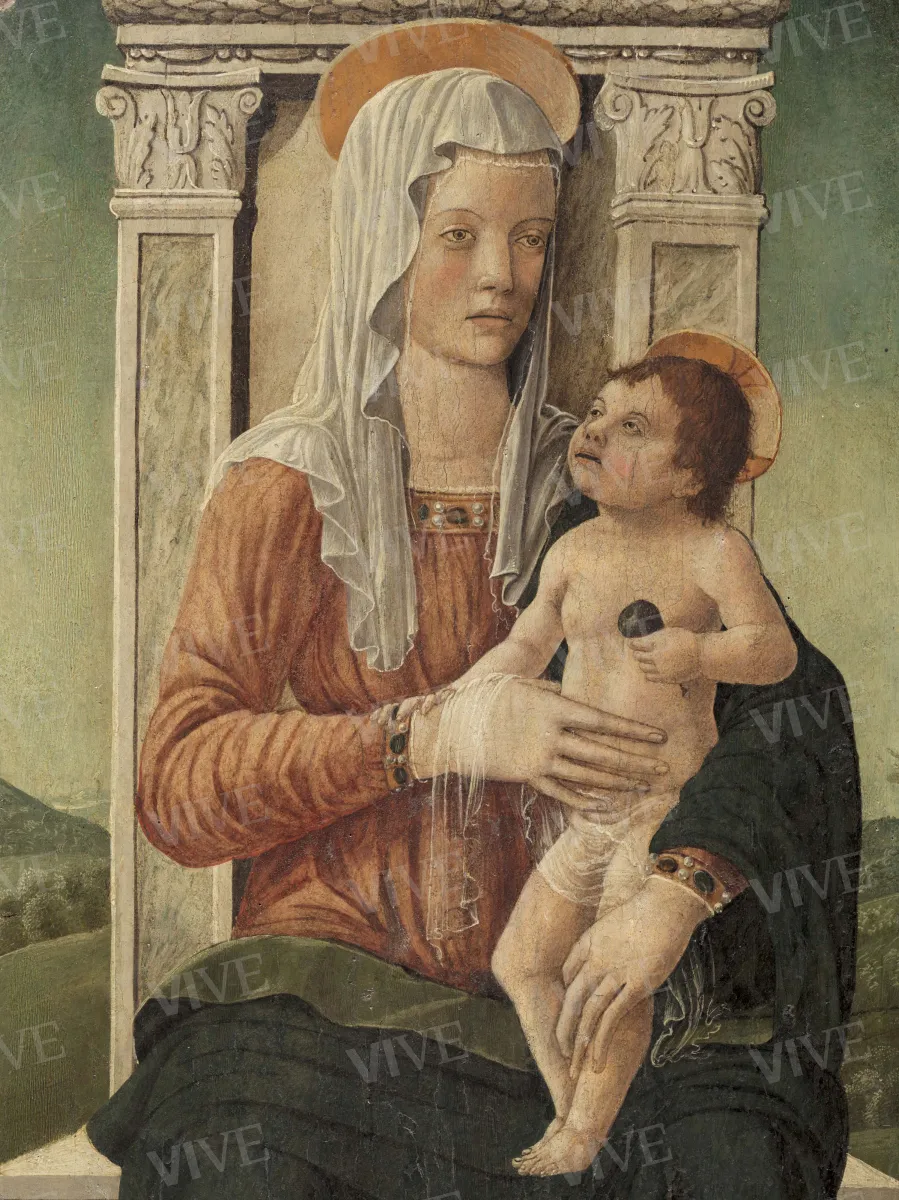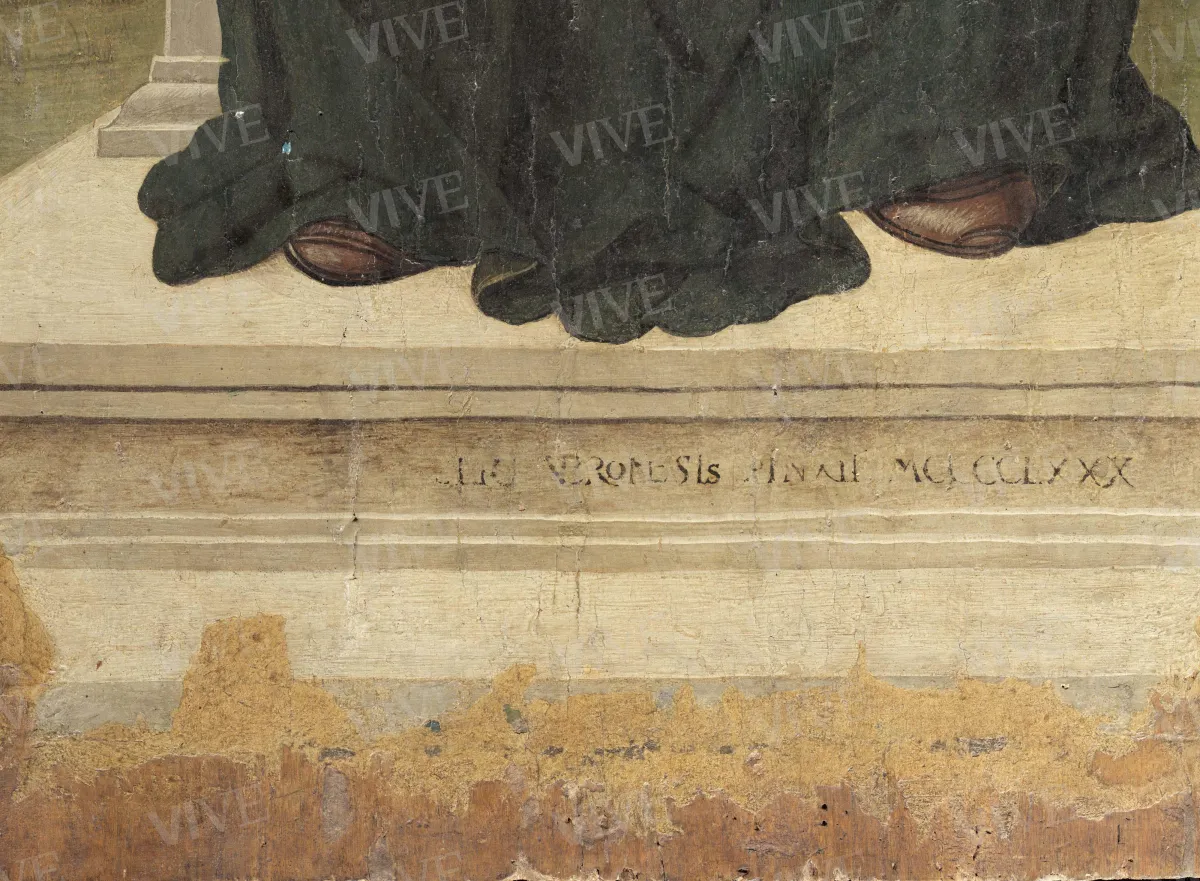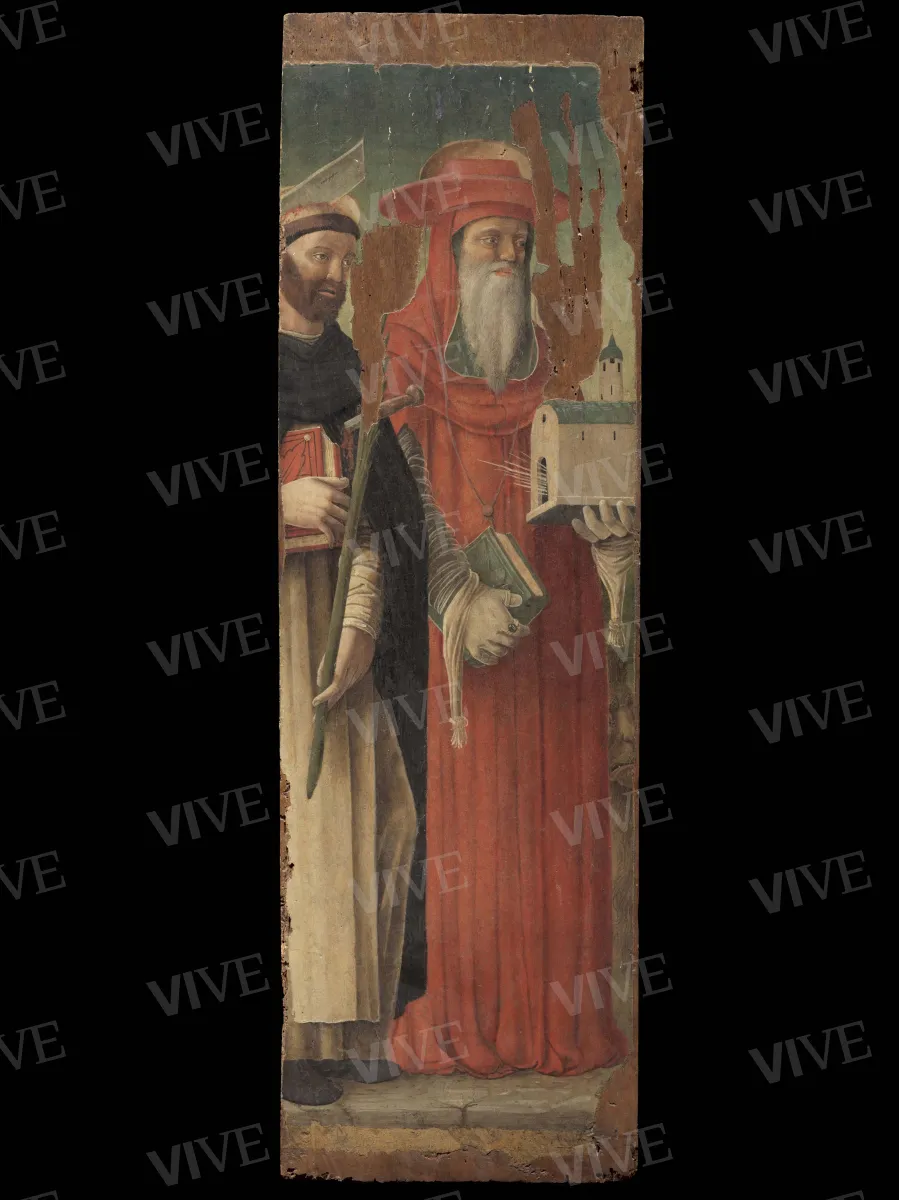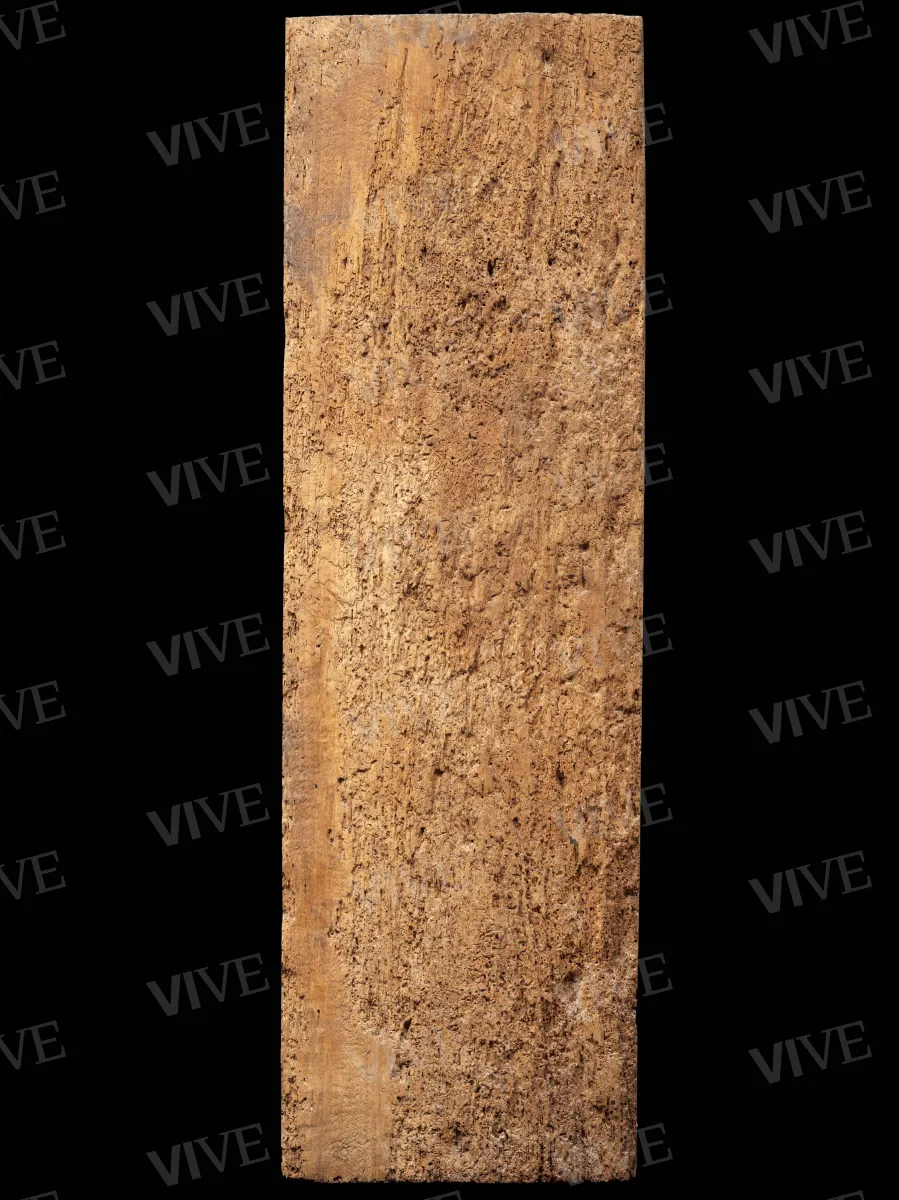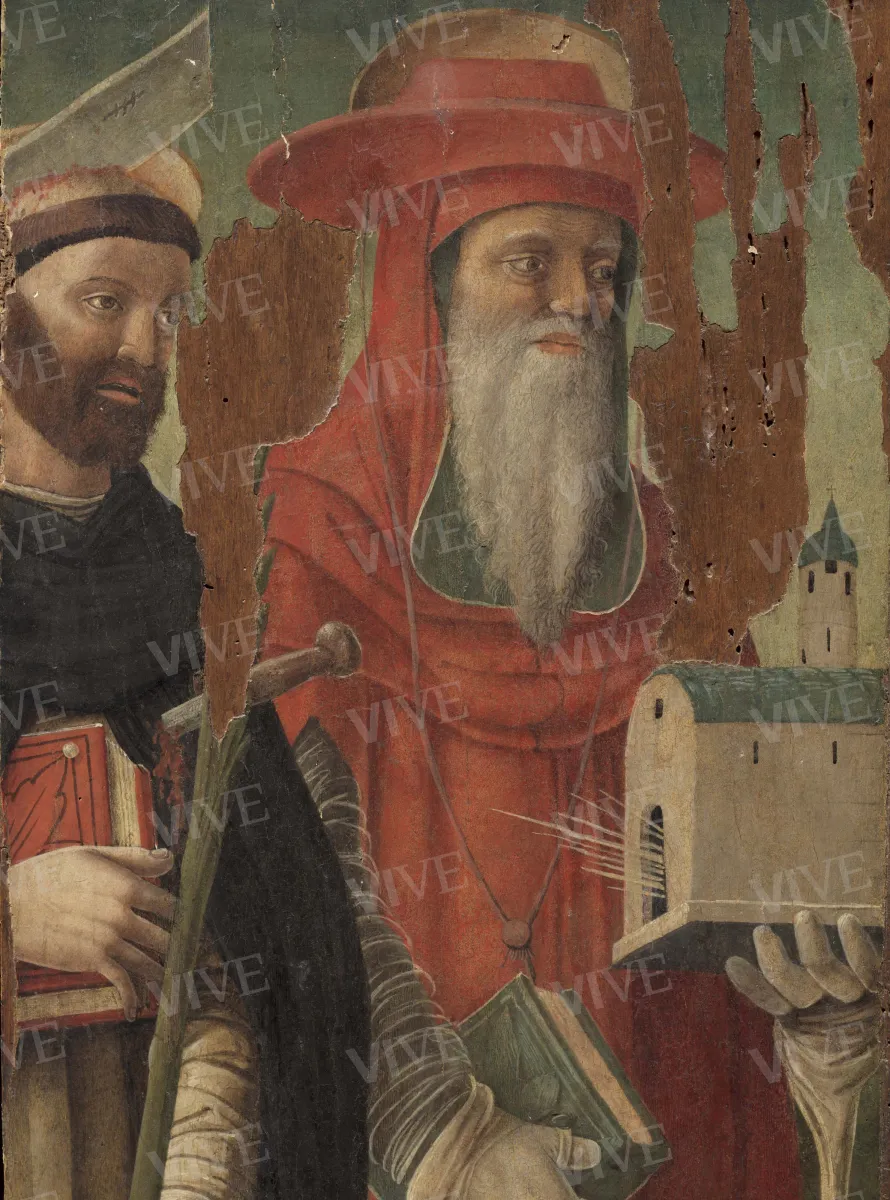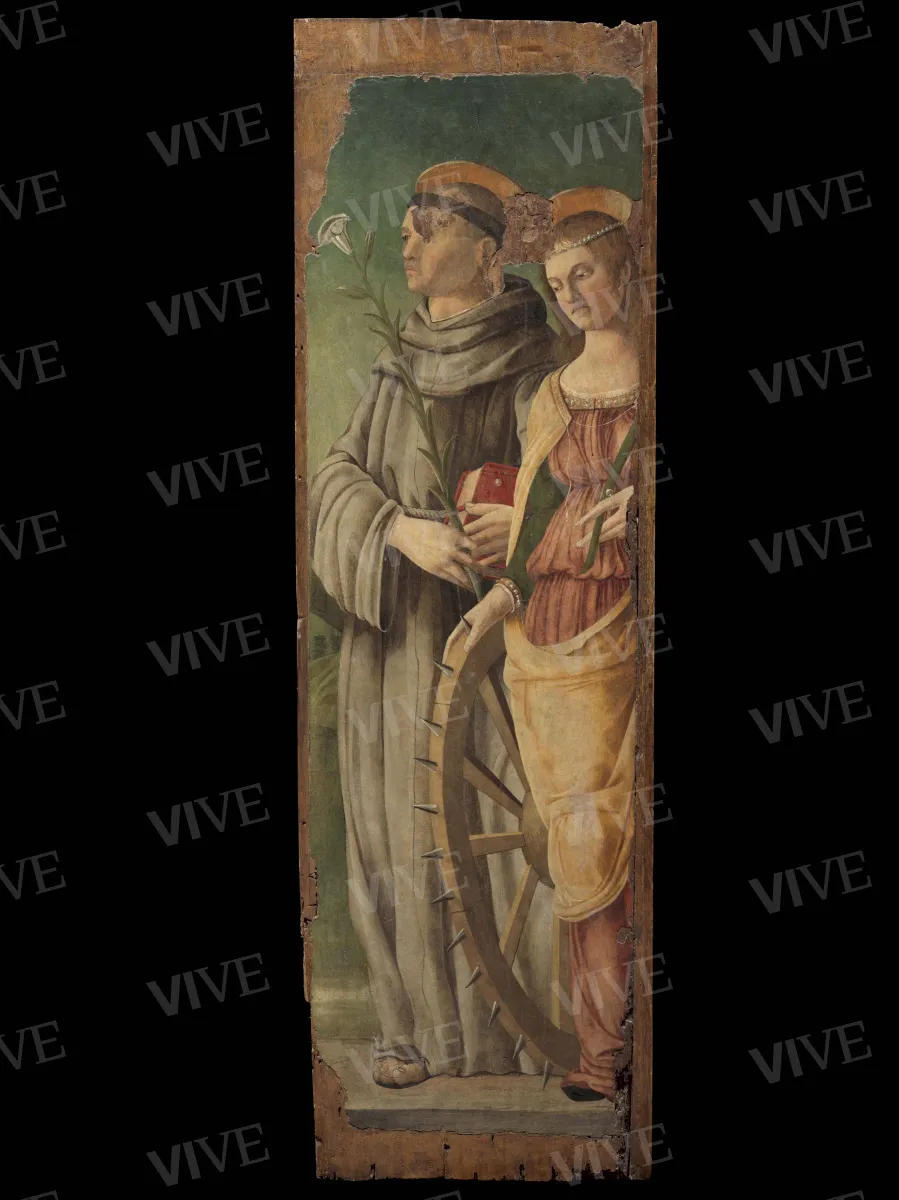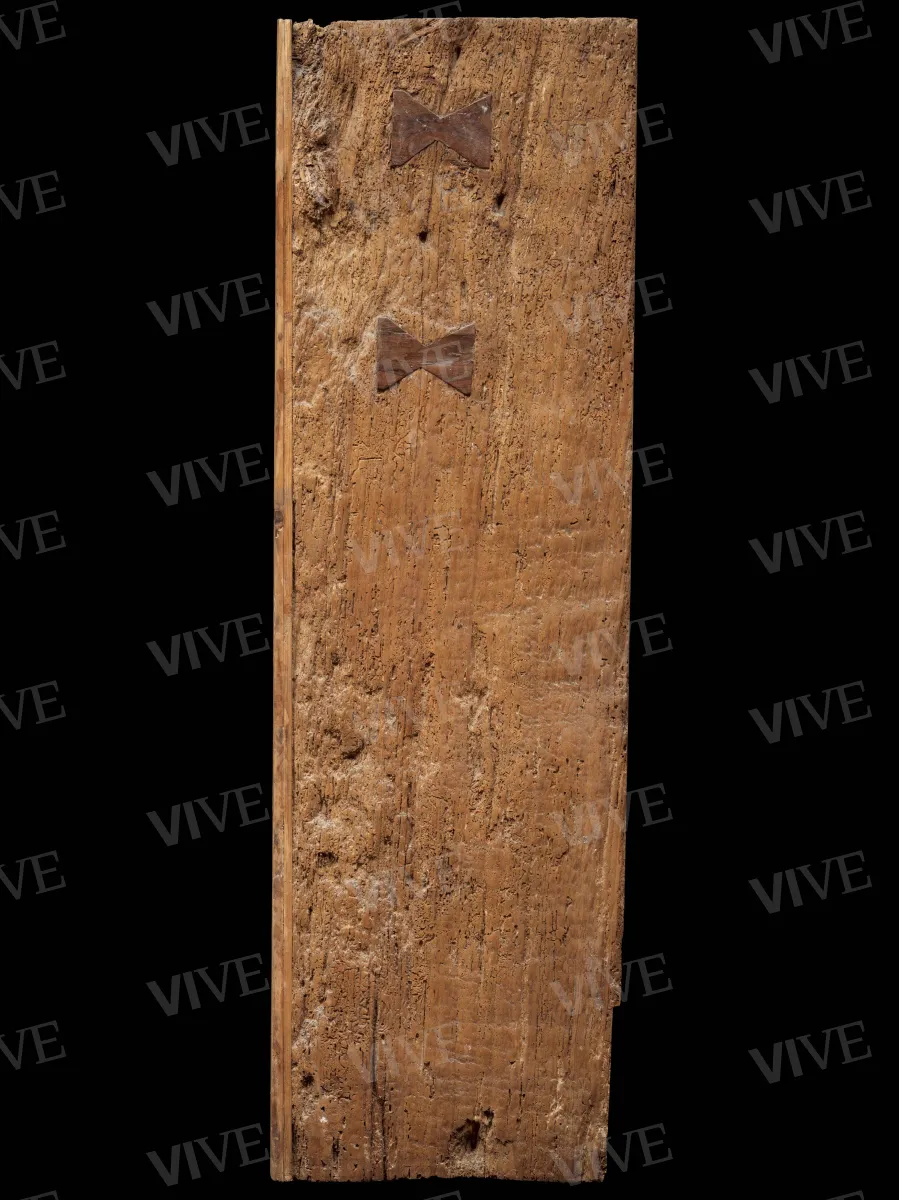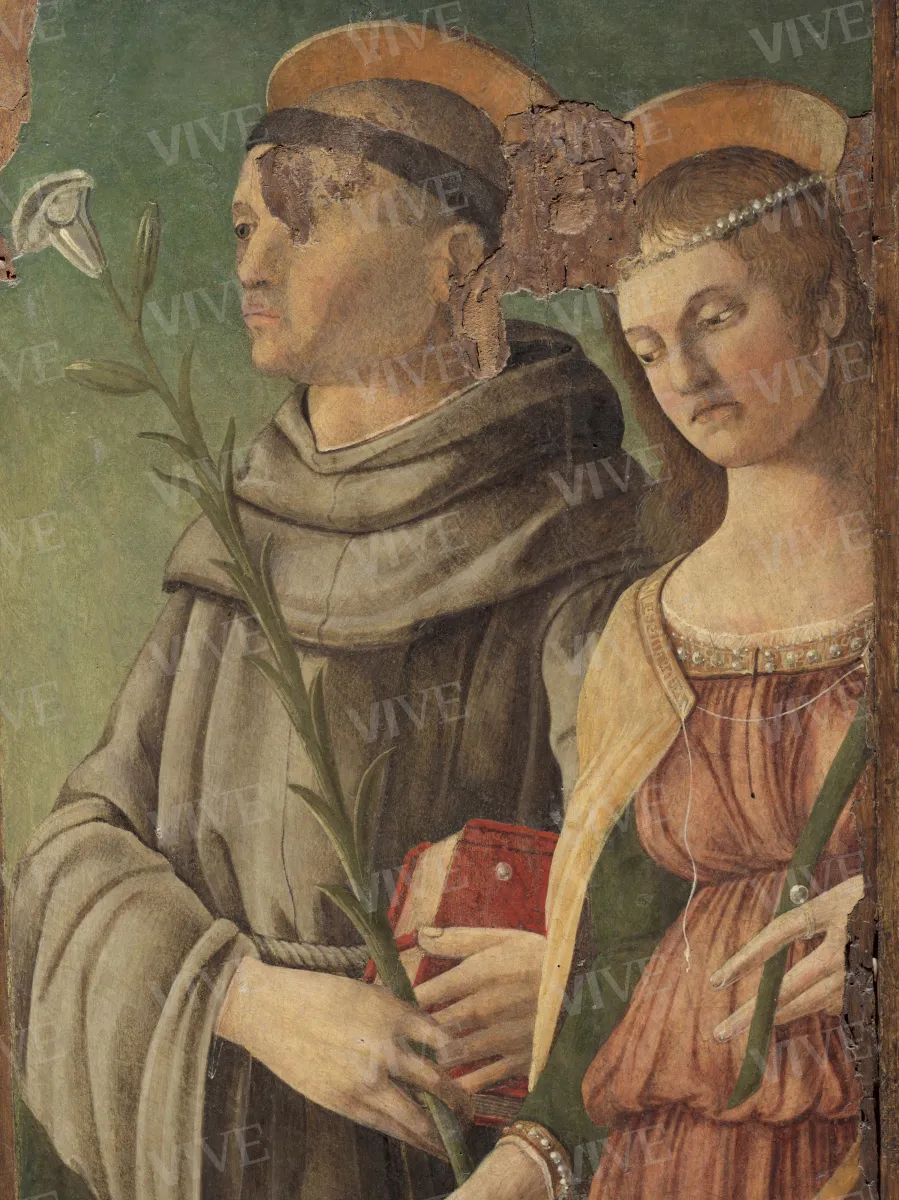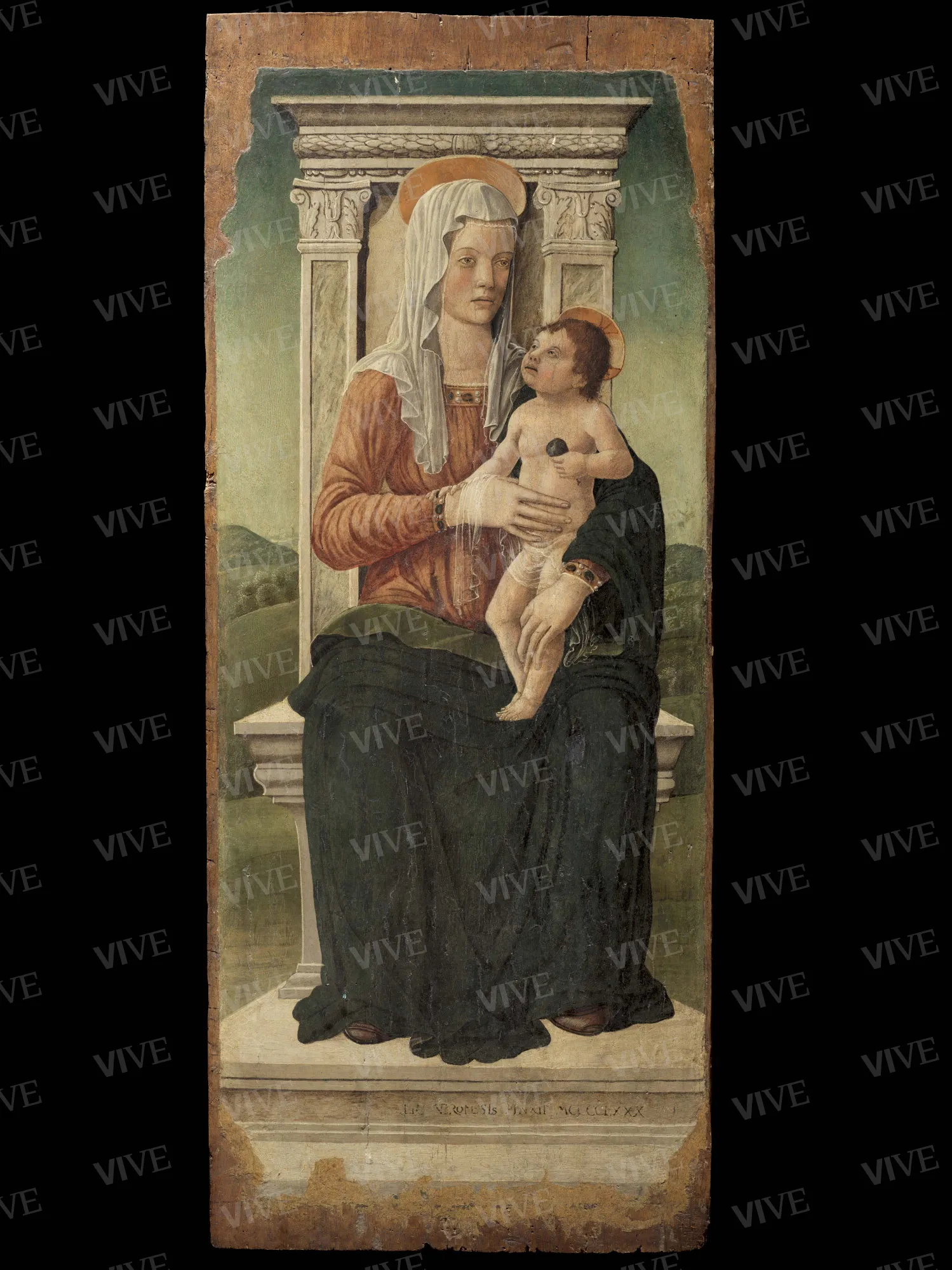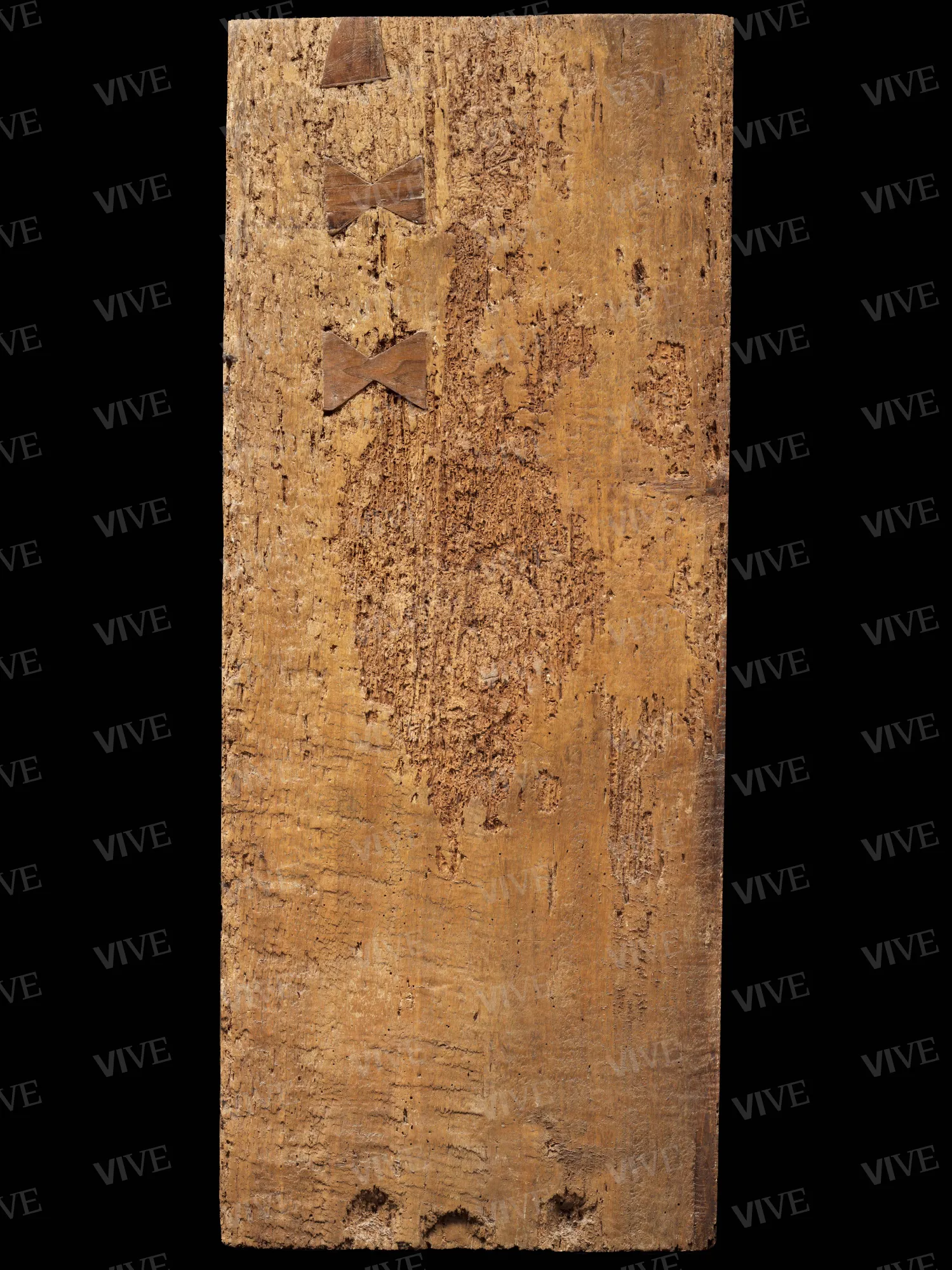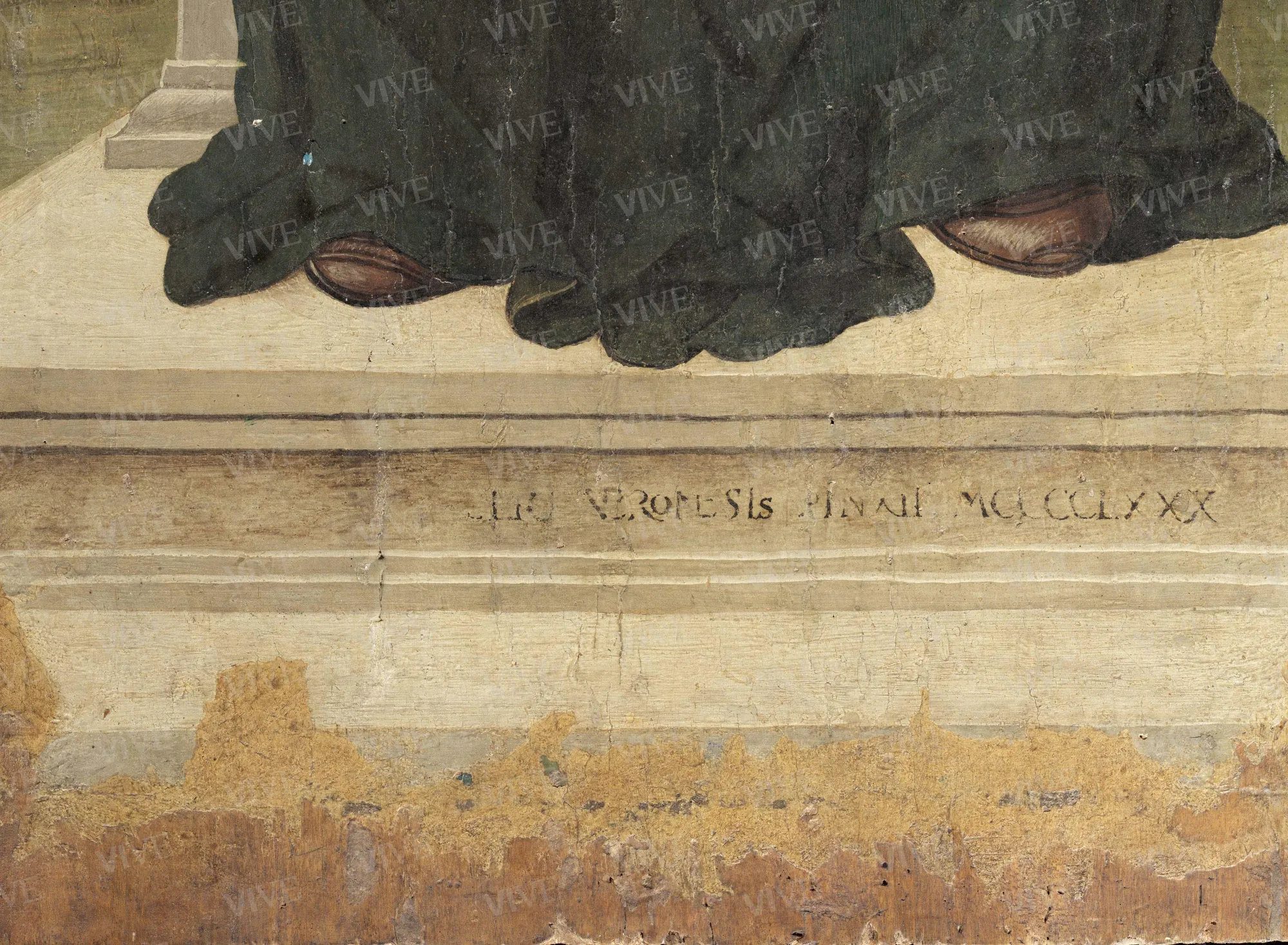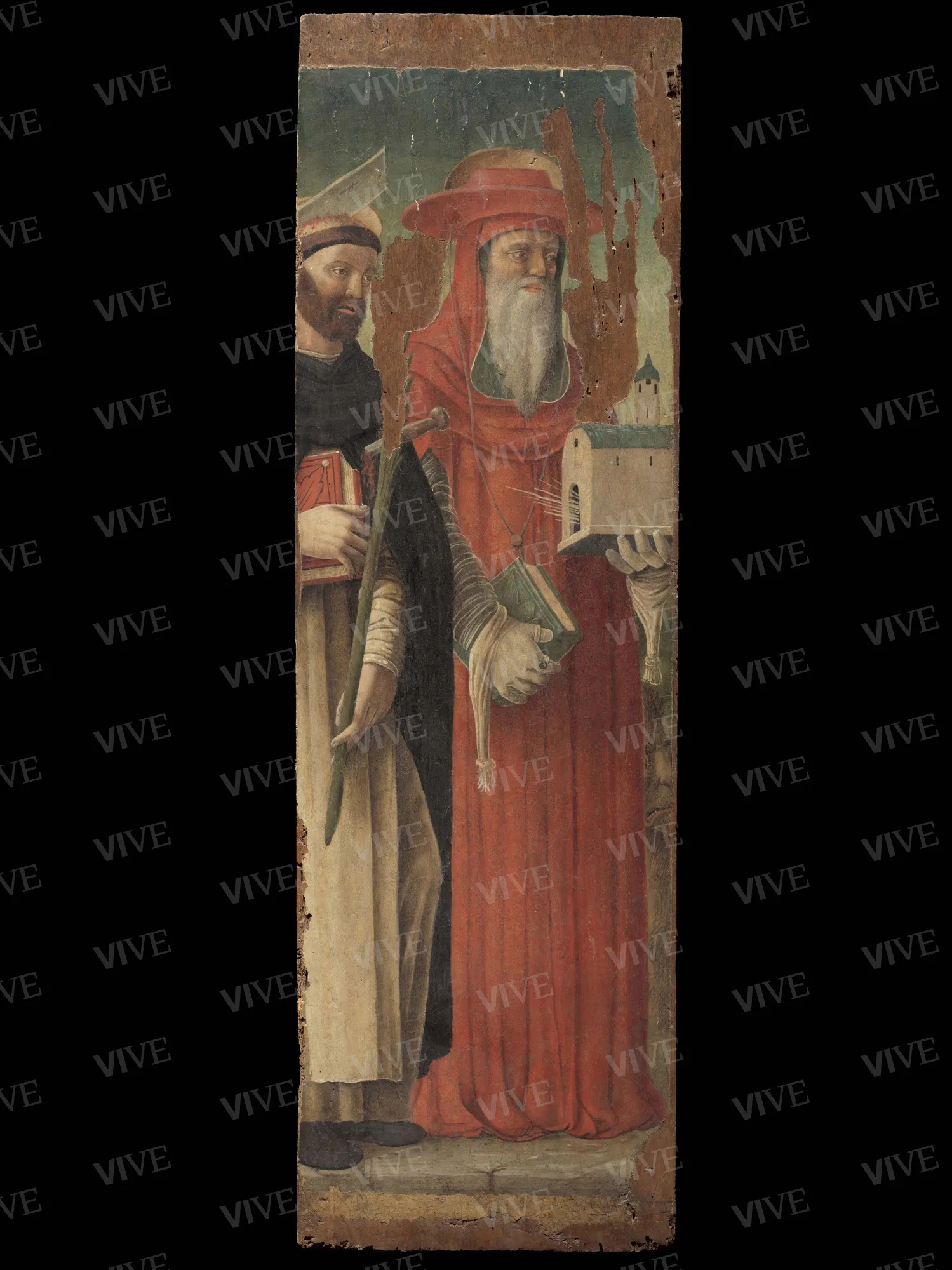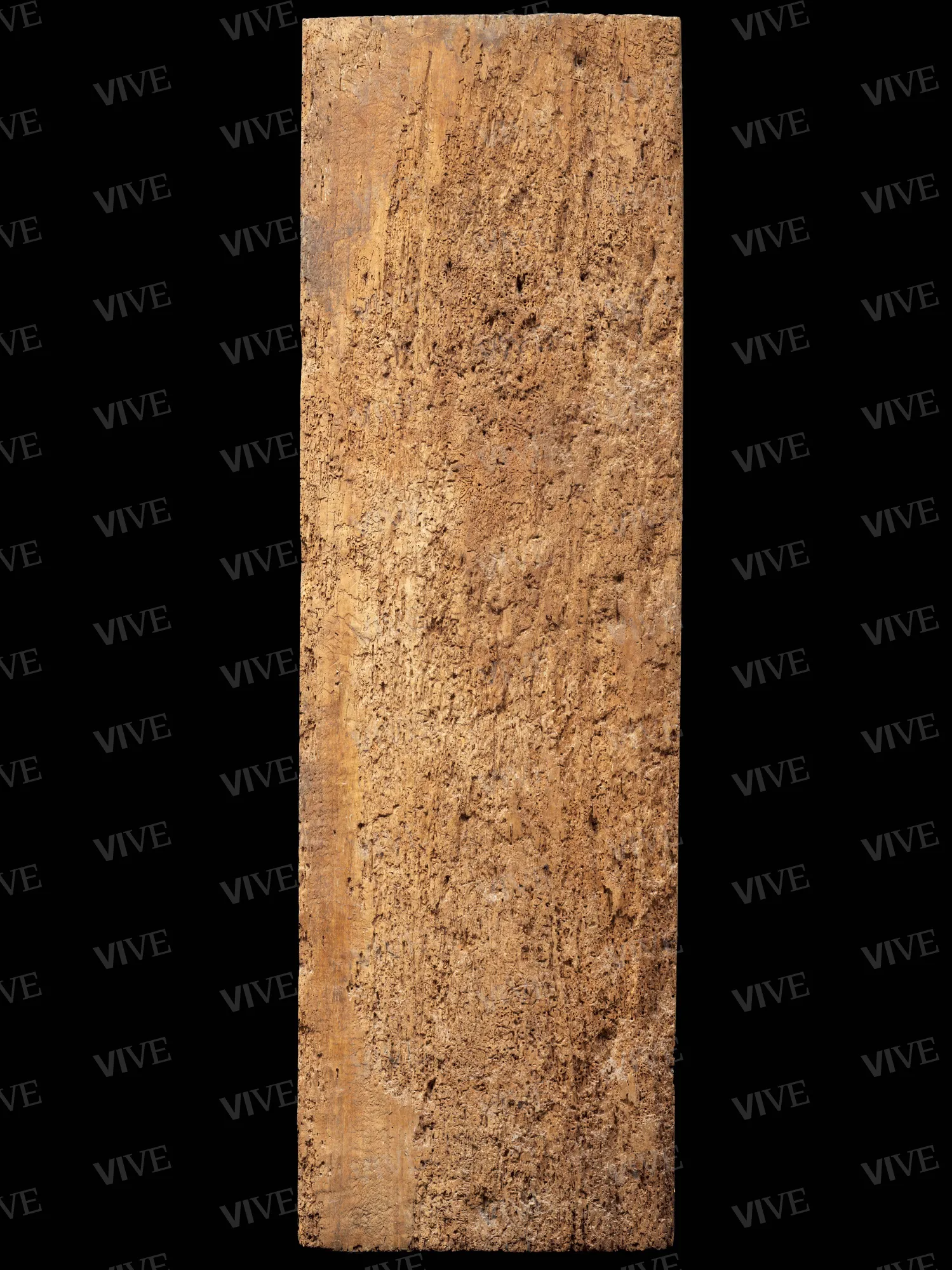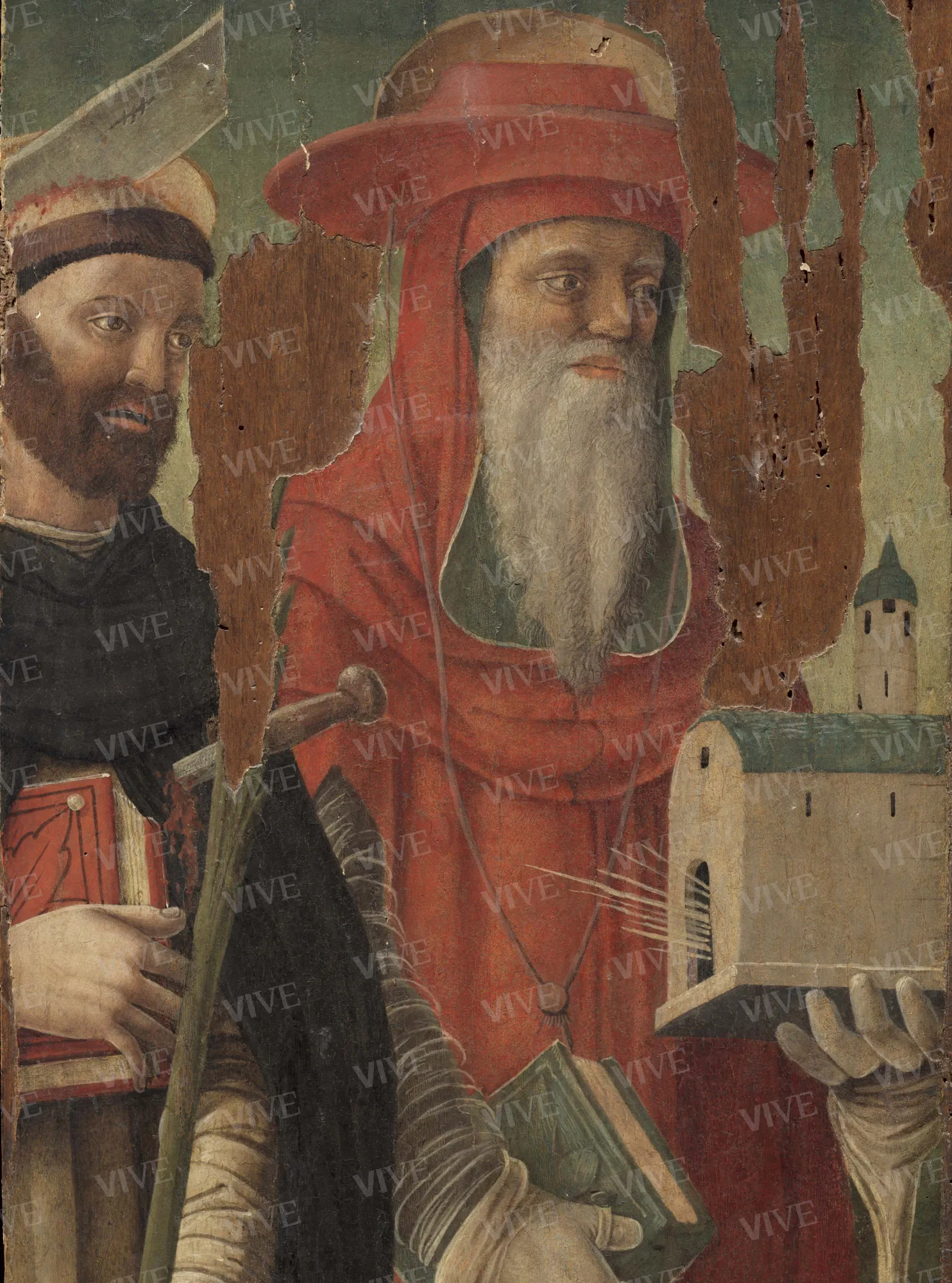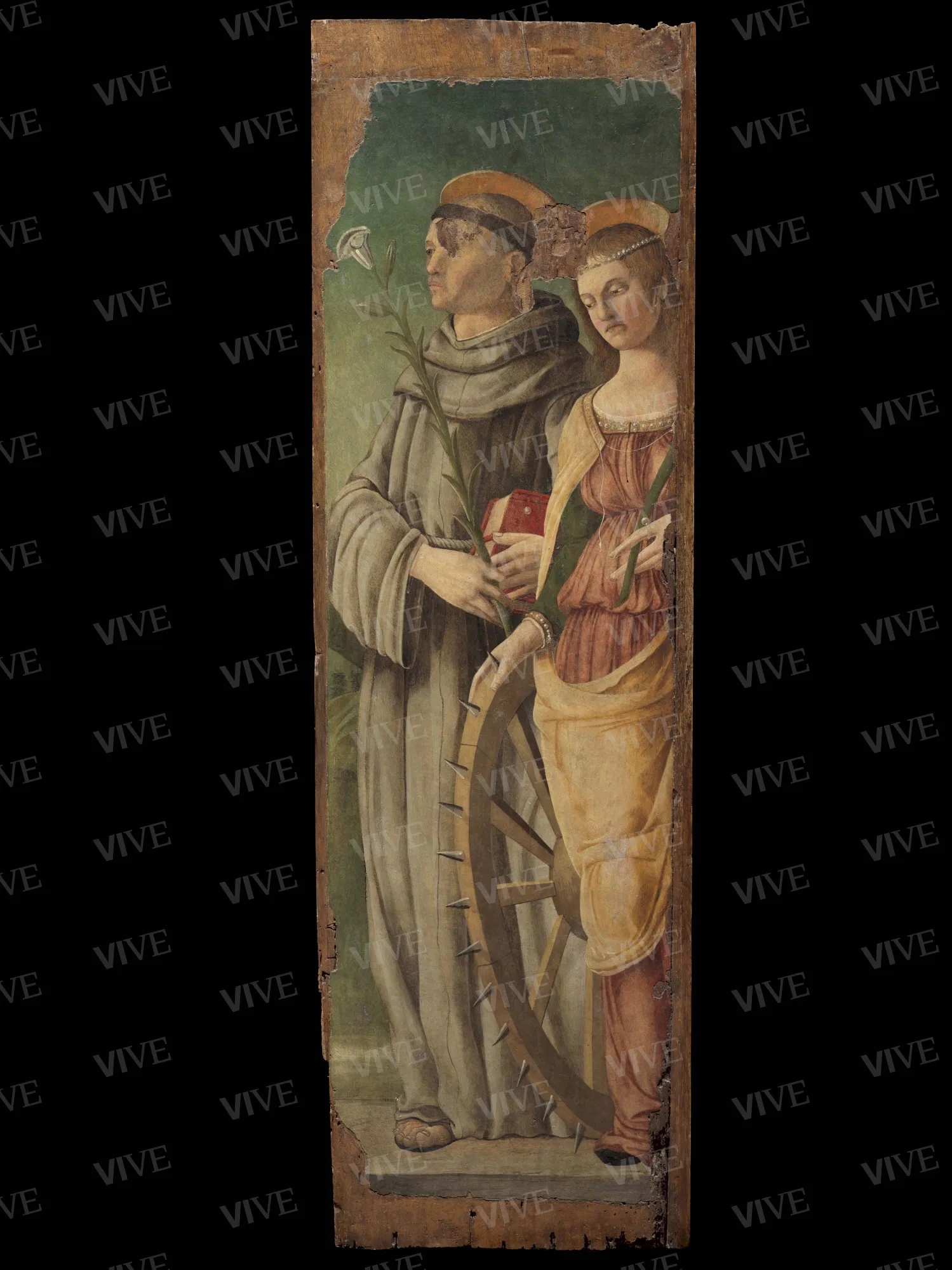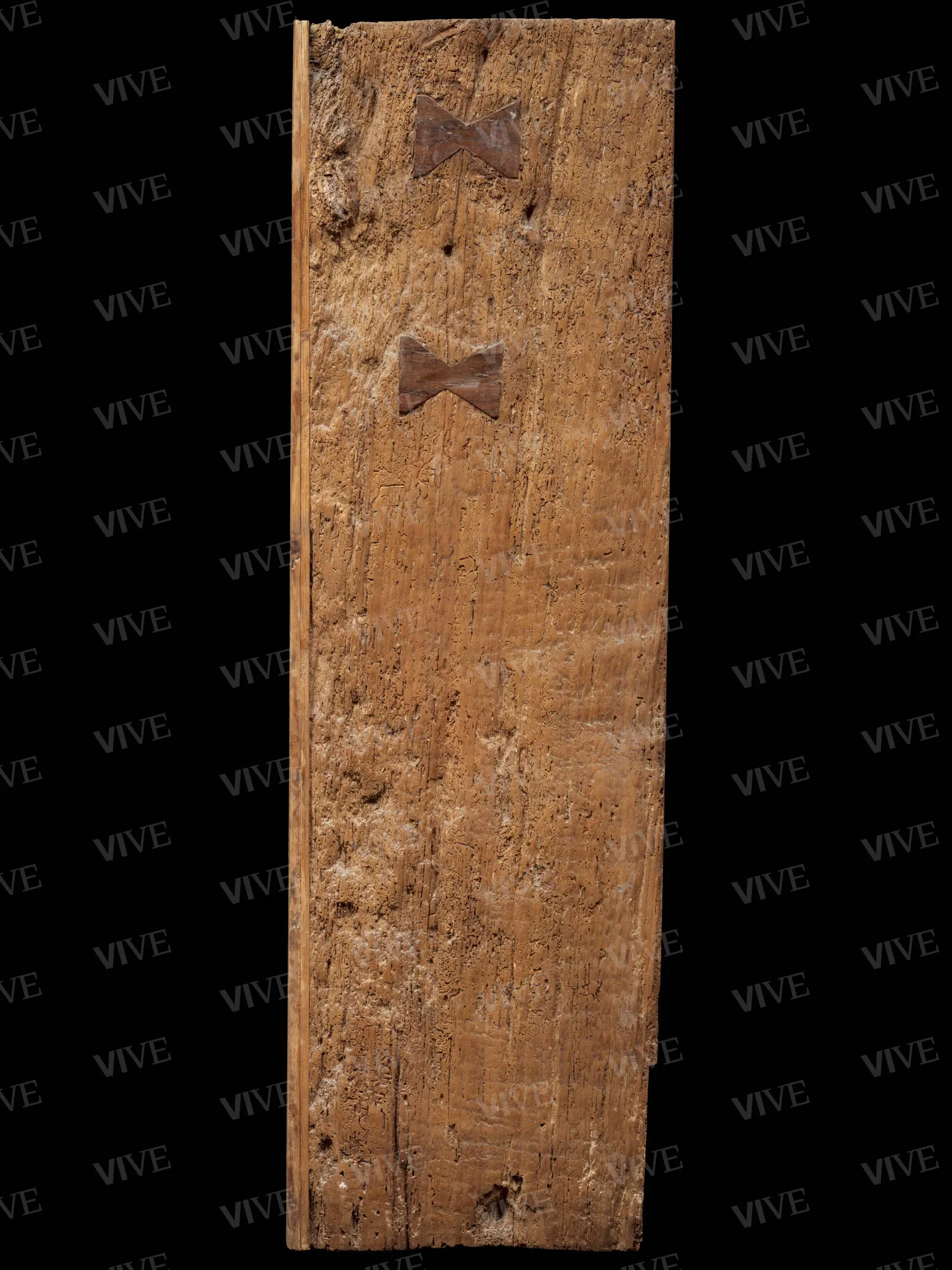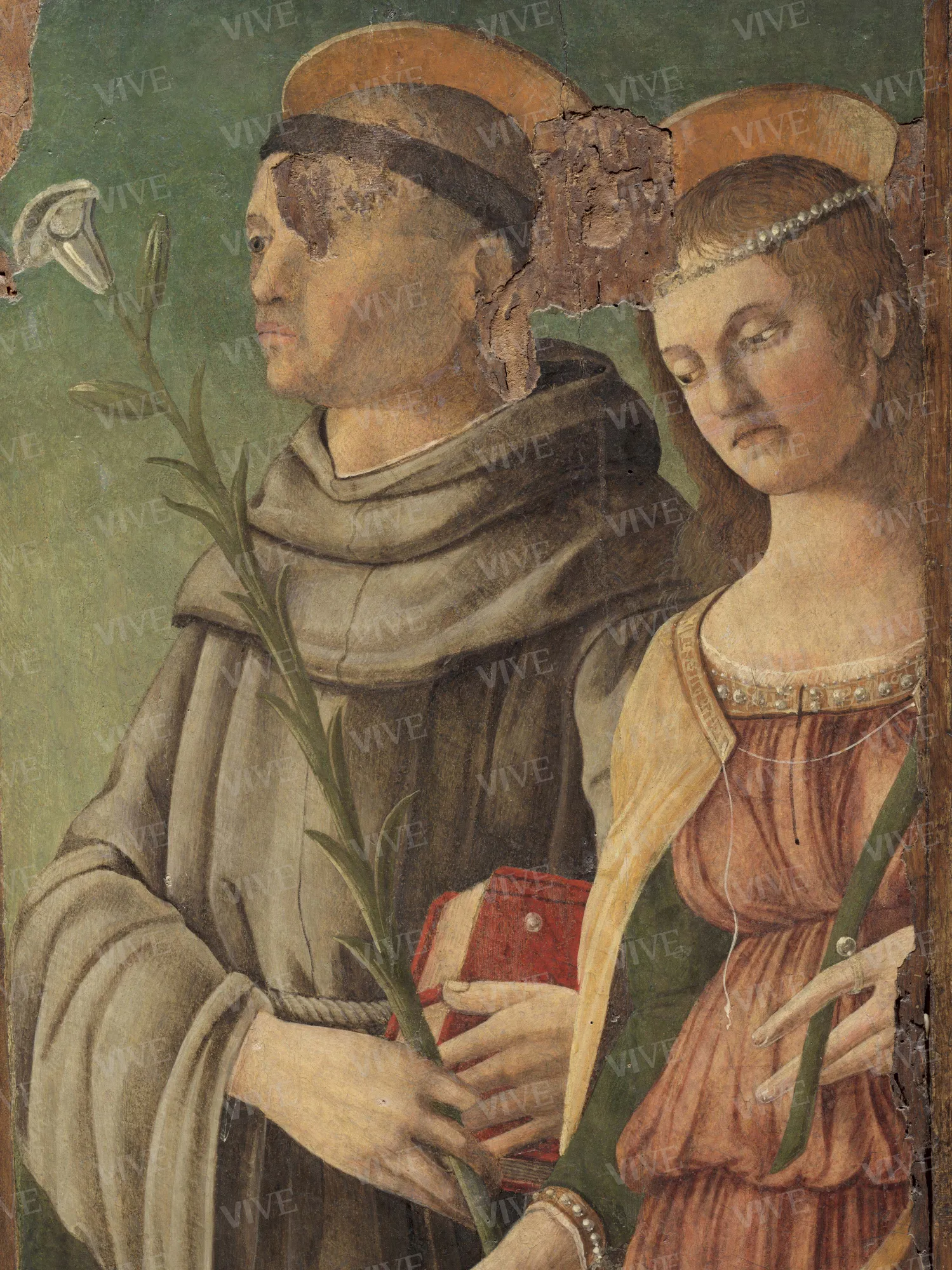Madonna and Child; Saints Peter Martyr and Jerome; Saints Anthony of Padua and Catherine of Alexandria
Angelo di Silvestro called Angelo Zoppo or Zotto ? 1470-1479
The triptych, originally housed within a frame inspired by Mantegna’s Saint Zeno Altarpiece in Verona, has been the subject of scholarly debate regarding its attribution to various Veneto painters. It is likely attributable to the Paduan artist Angelo Zoppo. The painter’s appreciation for antiquarian elements, which was prevalent in the Paduan artistic context, is evident in the depiction of the Virgin and Child seated on a marble throne featuring architectural elements derived from antiquity, combined with robust, austere figures.
The triptych, originally housed within a frame inspired by Mantegna’s Saint Zeno Altarpiece in Verona, has been the subject of scholarly debate regarding its attribution to various Veneto painters. It is likely attributable to the Paduan artist Angelo Zoppo. The painter’s appreciation for antiquarian elements, which was prevalent in the Paduan artistic context, is evident in the depiction of the Virgin and Child seated on a marble throne featuring architectural elements derived from antiquity, combined with robust, austere figures.
Details of work
Catalog entry
The triptych, missing its original woodwork, portrays a Sacred Conversation within a landscape. In the central panel, the Virgin is seated on a marble throne composed of antique architectural elements, holding the Child who stands on her lap. The left panel features Saint Peter the Martyr and Saint Jerome in a cardinal’s robe, presenting the Virgin with a model of the church where the triptych was to be housed. The right panel shows Saint Anthony of Padua and Saint Catherine of Alexandria with their respective attributes. According to Giovanni Battista Cavalcaselle, who observed the work in Padua at Giacomo Moschini’s residence, the triptych originated from an unidentified “nuns’ convent” in Salboro near Padua (De Marchi 2002, p. 168; Biblioteca Marciana, Fondo Cavalcaselle, Disegni e appunti, It. IV, 2031, fasc. 6 cart. E, f. 97 r.).
After passing into the ownership of Venetian antiquarian and nobleman Dino Barozzi (Mazzi 2015, pp. 397–398), and subsequently Raimond Van Marle, it entered the collections of the Museo Nazionale di Palazzo Venezia in January 1932 through a donation by Van Marle (Santangelo 1947, p. 42; Hermanin 1948 p. 224; Puppi 2014, pp. 25–26; Mazzi 2015, pp. 397–398). The museum acquired the panels referencing Francesco Benaglio from the inscription on the throne’s step (“FRA[N]CISCUS BENAGLIO VERONE[N]SIS PINXIT MCCCCLXXX”), initially legible after a restoration in the 1930s (Boccolini 1935). However, this inscription was later revealed to be false in a subsequent intervention in 1946 and partially removed. Antonino Santangelo (1947, pp. 41–42) dismissed the attribution to Benaglio, instead assigning the work to a follower of Gentile Bellini, suggesting Jacopo da Montagnana, whereas Federico Zeri (1955, p. 5) continued to attribute it to the school of Gentile.
The decision during the second restoration to preserve only part of the inscription for documentary purposes (Santangelo 1947, p. 41), which remained during subsequent conservation work in 1974 and is still visible today, has caused confusion among scholars. This portion of the text was considered original, leading to the erroneous conclusion that the painter hailed from Verona and the date inscribed was compromised (Marinelli 1990, pp. 632, 649, footnote 18; Bellosi 1994, p. 293; De Marchi 1995, p. 73, footnote 9). Nevertheless, notes from Cavalcaselle’s notebook indicate that although the work was attributed to the “school of Montagnana Jacopo,” a subsequent note reading “if it were in Verona it would be called Benaglio” was deleted, confirming Cavalcaselle did not read the inscription at the base of the throne, which was likely added to facilitate its sale in the antiquarian market (De Marchi 2002, pp. 167–168; Biblioteca Marciana, Fondo Cavalcaselle, Disegni e appunti, It. IV, 2031, fasc. 6 cart. E, f. 97 r.).
The attribution of the triptych to the Paduan painter Angelo Zoppo (for its attribution to Angelo di Silvestro, documented from 1464 to 1509, see Callegari 1998, pp. 218–219) was first suggested by Luciano Bellosi based on stylistic comparisons with other works (Bellosi 1994, p. 293), beginning with the fresco fragments from the monastery of Santa Giustina in Padua, which had already been attributed to Zoppo by Lionello Puppi (1962; Puppi 1977, p. 22, no. 4; Lucco 1977). De Marchi initially disagreed with Bellosi’s proposal (De Marchi 1995, p. 73, note 9). However, after considering clarifications introduced in studies on the painter’s biography (Callegari 1998, pp. 218–219) and evidence provided by Cavalcaselle, De Marchi concurred with the attribution to Zoppo, albeit with a date earlier than the traditionally accepted around 1480 (De Marchi 2002, pp. 167–168).
The faces of the saints in this triptych bear similarities to portions of the fresco attributed by De Marchi and Callegari (1995, pp. 98–99, no. 13) to the decoration of the chapel of San Martino in the monastery of Santa Giustina, which may date to 1477. Notable features include “marked eyebrows” and “lips highlighted as if with blush” (De Marchi 1995), resembling those of the Madonna and Saint Catherine.
Francesca Mari
Entry published on 27 March 2025
State of conservation
Fair, but with extensive discoloration.
Restorations and analyses
1936: restoration by Vito Mameli, under the supervision of Federico Hermanin;
1946: restoration by Carlo Matteucci;
1974: restoration by Raimondo;
2002: report on the state of conservation by Giacomina Passalacqua and Alessandra Sorrentino.
Inscriptions
Current inscription: “[...]LIO VERONE[N]SIS PINXIT MCCCCLXXX, formerly FRA[N]CISCUS BENAGLIO VERONE[N]SIS PINXIT MCCCCLXXX” before 1946.
Provenance
Giacomo Moschini;
Dino Barozzi;
Raimond Van Marle;
Rome, Museo Nazionale di Palazzo Venezia, from 1931.
Sources and documents
Biblioteca Marciana, Cavalcaselle Fund, Drawings and notes, It. IV, 2031, fasc. 6 cart. E, f. 97 r. digitized in <http://fondocavalcaselle.venezia.sbn.it/FondoCavalcaselleWeb/backOffice/detailImg.jsp?pIdRecord=52A87036–4102–4CA4–8316–B48688BF869F&pStorageUnit=
/imagesF2/&pCodDvd=904&pPathRelative=/2031/2031%2006/&pNomeFile=2031–6–099.jpg>
References
Sandberg Vavalà Evelyn, in «Art in America», 2, 1933, pp. 48-65, fig. 3;
Boccolini Guido, Una tavola di Francesco Benaglio nel Museo di Palazzo Venezia a Roma, in «Bollettino d’arte», 1935, pp. 272-274;
Santangelo Antonino (a cura di), Museo di Palazzo Venezia. Catalogo. 1. Dipinti, Roma 1947, pp. 41-42
Hermanin Federico, Il Palazzo di Venezia, Roma 1948, p. 224;
Zeri Federico (a cura di), Catalogo del Gabinetto Fotografico Nazionale. 3. I dipinti del Museo di Palazzo Venezia in Roma, Roma 1955, p. 5;
Puppi Lionello, Angelo Zotto et quelques fresques padouanes du XVe siècle, in «Bulletin du Musée Hongrois des Beaux-Arts», 21, 1962, pp. 31-43;
Berenson Bernard, Italian Pictures of the Renaissance. A List of the Principal Artists and Their Works with an Index of Places. Central Italian and North Italian Schools, I, New York 1968, p. 38;
Calogero Giacomo A., Marco Zoppo. Ingegno sottile. Bologna 2020, p. 26 nota 56;
Puppi, in Bellinati Claudio (a cura di), Dopo Mantegna. Arte a Padova e nel territorio nei secoli XVe XVI, catalogo della mostra (Padova, Palazzo della Ragione, 26 giugno-14 novembre 1976), Milano 1976, p. 22, n. 4;
Lucco Mauro, Esercizi e divagazioni sul “Dopo Mantegna”, in «Paragone», 323, 1977, pp. 110-130;
Marinelli Sergio, Verona, in La pittura nel Veneto. Il Quattrocento, II, Milano 1990, pp. 622-653, nota 18;
Bellosi Luciano, Indagine su Domenico Morone e su Francesco Benaglio, in Rosemberg Pierre (a cura di), Hommage à Michel Laclotte. Etudes sur la peinture du Moyen Âge et de la Renaissance, Milano, 1994, pp. 281-303;
Callegari, in Lorenzoni Giovanni, Dal Pozzolo Enrico Maria (a cura di), Basilica del Santo. Dipinti, sculture, tarsie, disegni e modelli, Padova 1995, pp. 98-99, n. 13;
De Marchi Andrea, Un punto fermo per Angelo Zoppo padovano “ignobile pittore”, in «Bulletin du Musée Hongrois des Beaux-Arts», 1995, pp. 69-91;
Callegari Raimondo, Scritti sull’arte padovana del Rinascimento, Udine 1998;
De Marchi Andrea, Primordi di Jacopo da Montagnana, in De Nicolò Salmazo Alberta, Ericani Giuliana (a cura di), Jacopo da Montagnana e la pittura padovana del secondo Quattrocento, Atti delle giornate di studio (Montagnana, Padova, 20-21 ottobre 1999), Padova 2002, pp. 162-170;
Lucco Mario, Sul catalogo di Jacopo da Montagnana, in De Nicolò Salmazo Alberta, Ericani Giuliana (a cura di), Jacopo da Montagnana e la pittura padovana del secondo Quattrocento, Atti delle giornate di studio (Montagnana, Padova, 20-21 ottobre 1999), Padova 2002, pp. 131-150;
Maoli Roberta, L’influenza del trittico di Mantegna sull’opera di Francesco Benaglio, in «Annuario storico zenoniano», 17, 2000, pp. 43-76;
Puppi Lionello, La Tomba dell’Ebreo, Crocetta del Montello 2014, pp. 25-26;
Mazzi Maria Cecilia, Il furto dei dipinti della collezione Van Marle a Perugia: un mistero insoluto, in Dragoni Patrizia, Paparello Caterina (a cura di), In difesa dell’arte. La protezione del patrimonio artistico delle Marche e dell’Umbria durante la Seconda guerra mondiale, Firenze 2015, pp. 395-425.

